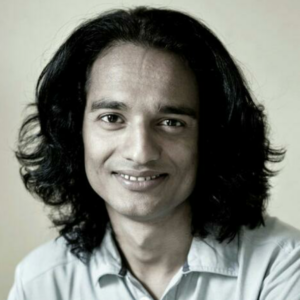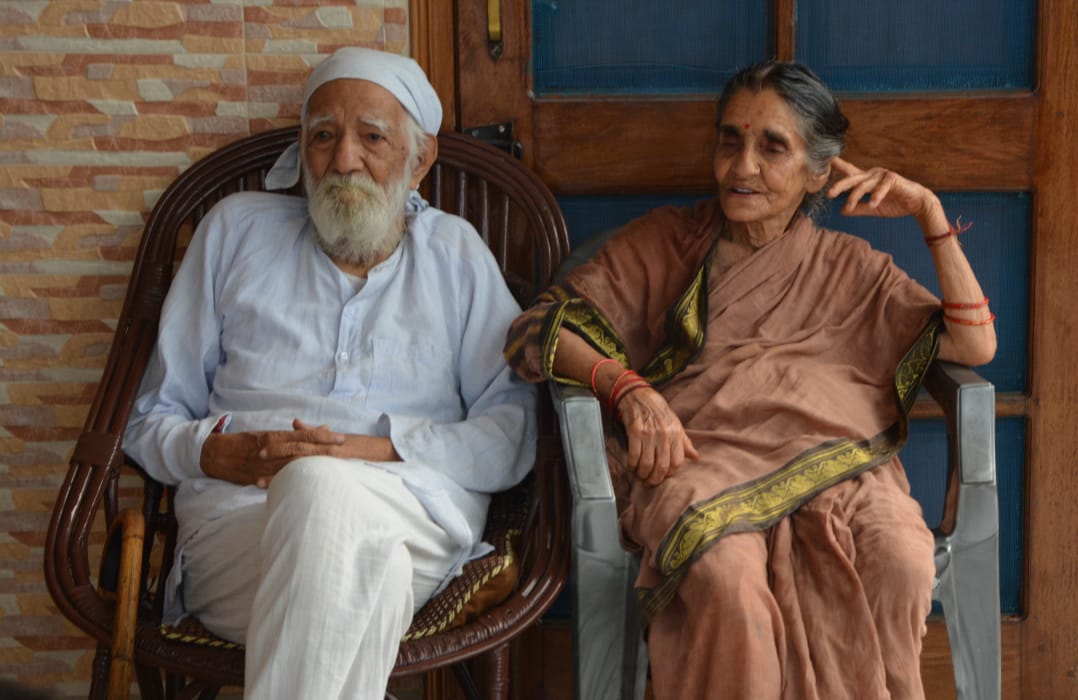
 By Kaushal Kishore*
By Kaushal Kishore*
Omicron varient of the virus is the reason behind new wave of infection in different parts of the world. Second wave, in the beginning of this year, caused irreparable loss that included the proponent of Chipko movement Sunderlal Bahuguna. The series of tributes that appeared in the media require attention from all corners to start its collective study as a society or community. A brief comment by Alka Tyagi in Hindi and Simran Kashyap in English might prove helpful to start with. In this case, we need to take a note of the fact that his family has rejected the controversial Nobel Prize offer that Kashyap mentioned. Madhu Pathak, the daughter of Bahuguna, declared it as a fiction by its author.
But still the metaphor is no longer incomprehensible, when one thinks what Gandhi had said while referring to Sunderlal Bahuguna, a day before his assassination at Birla House on 30th January 1948. The consistency of the public in the princely state of Tehri while adhering to values of Gandhian non-violence was noticeable. As such Gandhi had referred to this consciousness, and compared it to the Himalayas itself.

Nature has enthused the creatures a kind of grace on the top of the world in the Himalayas. Dr. Inderjit Kaur, head of Pingalwara Society noticed it in her collection. Samdhong Rinpoche, the first Prime Minister of the Tibetan government in exile, can help us to explore it further. That’s why after sixty-five years long companionship, Vimla Bahuguna urges us to listen to Professor Rinpoche on her husband’s life and works.
The words of Martand Singh, the deceased descendant of Kapurthala royal family, who used to be closely associated with Mussoorie, are still meaningful. In order to establish its credentials across the world, India should utilise the personality of Bahuguna. Singh has mentioned about his skills in communication with the top leader of the United States and a layman from the village in its interpretation. If nation-states of China and Tibet are included in this list, a larger world will be benefited by the Himalayan nectar that seeps from the roof of the earth.
The fatal incident of March 20, 1992 has been mentioned by Alka Tyagi in Amar Ujala. The anti-dam satyagraha started at Tehri after accomplishment of the Chipko movement. That day, Dr. Vachaspati Maithani reached there with at least forty people in the bus to support the cause. The driver jumped off the bus after setting it to a trench near Pilkhi Baur while returning that evening. Today the killing of these Satyagrahis is an open secret of the Tehri dam that can remind the tragic end of Sri Dev Suman.
After the investigation into the two incidents of the premature deaths, one can find similarities in policies of the democratic corporate state and the princely state of Tehri in the case of Satyagraha. Non-violent resistance was curbed by the government and the contractor together by adopting all means. As a consequence, the forces of resistance scattered like a pack of cards before the united efforts of the ruling class and the political class. After all, the development and the destruction found proportionate place in the Himalayas. The condition of Tibet is an example that seems to extend further across the hills, as an outcome of turning away from these realities.
After the series of Satyagraha that prolonged for two decades the dam was constructed on the Bhagirathi. Despite a series of assurances of the Prime Minister to Bahuguna, the project started functioning in the 21st century. The founder and president of VHP (Vishwa Hindu Parishad), Ashok Singhal also joined the protest against the dam along with the Sangh Parivar. But still these Satyagrahis did not get justice. The leaders in Delhi Assembly paid tribute to Bahuguna. Chief Minister Arvind Kejriwal has written to the Prime Minister demanding Bharat Ratna for Bahuguna. A group of civil society activists gathered at Gandhi Peace Foundation to discuss all these issues last month. The verdict of the Supreme Court in the Uphaar Cinema fire incident reverberated here that reached beyond the limits of the accidents. Galileo, in Europe, got justice after three centuries. Keeping these facts in mind, Manoj Kumar Jha, managing editor of Gandhi Marg, has written a letter to Ashok Kumar, the Director General of Uttarakhand Police, urging him to re-investigate that case.
Once the purity of the Ganga was worth taking an oath of highest kind. Now that Aviral-Nirmal Ganga is a dream for several Ganga Rights activists. The state has authorised its agencies to ensure it, consequently their services are out of the scope of the public service. Unfortunately, the authorised bodies are not responsible in case of pollution. The outcome of this failed system is now apparant. Bahuguna campaigned to procure aid for upbringing of the orphaned children of the victims of that day. Still the Satyagrahis neither got justice nor respect. The monument in their memory is yet another dream that can be fulfilled in future by the next generation of the Bahugunas.
In the Himalayas, the need for ecology conservation is increasing day by day. This is one of the reasons behind the intensified movements there. Professor G.D. Agarwal has attempted to raise the anti-dam protest in the modern age of consumerism. We can never forget his sacrifice. Extention of the Tibet and ignoring these facts are also closely associated with one another. Humanity needs to think upon it in order to rectify the mistake of 1959 when Tibet fell.
*Kaushal Kishore is the author of The Holy Ganga (Rupa, 2008) and Managing Editor of Panchayat Sandesh, a monthly organ of All India Panchayat Parishad. The views expressed as personal.





